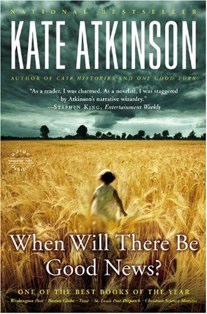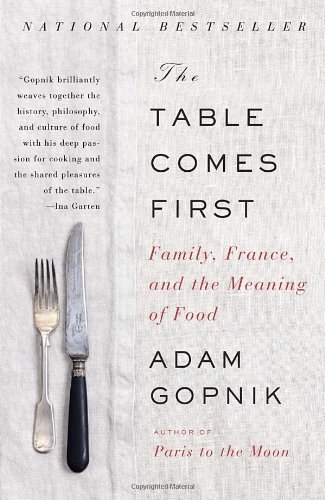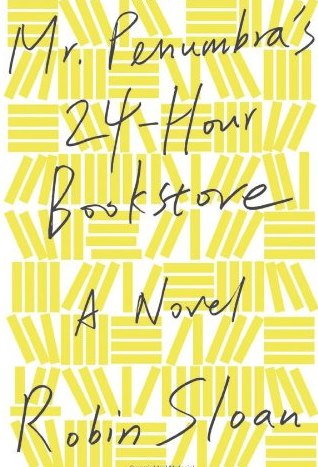- chopped (duck) liver ❧ smoked salmon deviled eggs ❧ cranberry bread
- flowerpots filled with snow (bluefish, goat cheese, creme fraiche) with asparagus and haricot vert ❧ cream of asparagus soup
- ceviche of Gloucester halibut, lime, and clementine juice
- duck confit, blinis, bbq sauce ❧ smoked turkey breast ❧ Vietnamese quick pickle
- braised beef cheeks ❧ mashed smoked yams ❧ sautéed baby artichokes
- salad ❧ cheese
- raspberry pecan tarte
- biscuits tres chocolates
Despite all the criticism, this film does exactly what it sets out to do. It’s a re-imagination of The Hobbit as if it had been written by the author of The Lord Of The Rings.
The Tolkien who wrote The Hobbit was a very different writer, pursuing very different ends. I used to think — we all used to think, once — that Tolkien had deepened and darkened his mythos after The Hobbit, that the appendices to The Lord Of The Rings are a fixup to repair mistakes in the older story. But that interpretation, I understand, is no longer tenable: the personal mythos was there all along, and it must always have had scale and darkness.
In The Hobbit, Tolkien takes that mythos and applies an Instagram filter tuned to the late Victorian imagination of the English cottage tale. In Lord of the Rings, he switches filters and tunes to Beowulf. The film tells the older story but uses the later filter, reproducing the language and style of the later epic to re-imagine the earlier.
I’ve been bad about blogging lately because I’ve been completely head-down on Tinderbox Six. It’s huge, but it’s coming along quickly. It’s going to look great.
I hope to be back to he usual schedule in 2-3 weeks.
by Kate Atkinson
This complex and lyrical police procedural, set in and around Edinburgh, features three distinct investigators. One of them is a 13-year-old orphan. Two serial killers are involved, and (I think) two doctors named Hunter, only one of whom is being hunted. This could have been a train wreck or a leaden postmodern experiment, but Atkinson makes it all seem as straightforward as a day at the office.
The University of Chicago’s Admissions Department faces a puzzle.
If you’re an applicant and sent this to us: Why? How? Did you make it? Why so awesome? If you’re a member of the University community and this belongs to you or you’ve gotten one like it before, PLEASE tell us how you acquired it, and whether or not yours came with a description— or if we’re making a big deal out of the fact that you accidentally slipped a gift for a friend in to the inter-university mail system.
Tinderbox 5.12 is out. Lots of little fixes, and tons of foundation work, make this a future classic.
Tinderbox 5.12 will likely be the last version of Tinderbox to run on Leopard and Snow Leopard, by the way. We’ve got lots of new stuff coming, and it needs the newest tech.
Upgrades, as always, are free if you’ve upgraded in the past year. And, if you upgrade now, you’ll get next year’s new Tinderbox goodness as well.
Tinderbox has always had two preference dialogs: one, called Document Preferences, that controls the behavior of the current Tinderbox document, and another, called Tinderbox Preferences, that determines the defaults for newly-created documents. So if you want this document to use Helvetica, you do it in Document Preferences, and if you want every new project to start out using Helvetica because it’s your font, you use Tinderbox Preferences.
Over in the forum, a new users – actually, someone kicking the tires – took us to task for this cockamamie system. And I’m not entirely sure we don’t deserve it! But I think my reply, edited and expanded here, might be of some general interest.
Tinderbox uses Preferences extensively. They're not just cosmetics: a number of preferences change the way your Tinderbox document works.
There are two distinct roles that preferences can play in any document-centered program:
- The default settings for new objects in this document -- in this case, for new Tinderbox Notes.
- The default settings that apply to new documents.
When Tinderbox first decided to separate "TINDERBOX PREFERENCES" (which apply to new documents) and "DOCUMENT PREFERENCES", things were even more complicated. At that time, one convention held that the document-level preferences would be called properties. But that word originated in the Windows world, and at the time it evoked unpleasant emotional resonance among a significant part of our audience.
Some applications apply preferences to the current document if there is one. To edit the application preferences, you open the Preferences window with no documents open. But that would be inconvenient for the many Tinderbox users who keep a Tinderbox journal or daybook open all the time.
More recently, lots of applications have dispatched document preferences to a document-level inspector pane. Apple’s iWorks pioneered this. We didn't do that in Tinderbox because, as that time, inspectors were discouraged. (There were also some uncertainties about asynchronous changes to defaults in the presence of active agents and actions.)
And so Tinderbox has always separated document and Tinderbox preferences. It's not ideal: getting the wrong preference is an FAQ, and every time we write the words we have to emphases DOCUMENT preferences. It might change in Tinderbox 6.
But we're not idiots: there's a reason things behave as they do.
30th birthday of Eastgate Systems, Inc. Purveyors of serious hypertext since 1982.
Amazing compilation of car accidents in Russia. Hot off the press, and hard to believe. Why is this funny? It is!
I’m deep in the code of Tinderbox 6. Lots of stuff happening. Yesterday, it was contextual menus for outlines, and the animation when you indent or outdent notes, and the in-place editor.
It’s exhausting, and it leaves little time for writing, eating, or anything else.
Sid Meier wrote a wonderful game, Railroad Tycoon, back in 1990. It’s a complex business and engineering simulation, abstracted sufficiently to be fun but replete with tons of interesting detail, both historical and technical. The history is mostly baked into the game, not merely an appliqué, and this is one of the few time’s that’s worked well.
Now, the game is back for Mac OS X. It looks terrific. It plays very well. The rules have been adapted and, in general, improved a bit to reduce micromanagement and simplify automatic decisions. The effects of competition — always a thorny issue for this game — have been revisited again, to more satisfactory effect.
A bit of the economy has been abstracted into oblivion. Nothing requires more than one raw material, for example, and so you find yourself with a greater number of dedicated trains with single-purpose tracks. The cost of bridges and tunnes has been reduced, but there’s no way to borrow money. The portfolio of trains is smaller – no dedicated special-purpose engines – but the trains are modelled in beautiful detail. I still find the “stock market” a distraction, at least when playing the AI, from building railroads.
Game studies people might enjoy a look at the way this version of the game consciously combines rail simulation with simulation of model railroading – a simulation of a simulation.
by Adam Gopnik
This satisfying volume presents an extended essay about food, food writing, and restaurants that ranges from wartime French bistros to the Adriá brothers. Gopnik is ultimately interested in the way thoughtful eating lies at the intersection of animal nature and the mind. Much depends on dinner.
by Robin Sloan
This charming romp begins when an unemployed, RISD-trained graphic designer lands a night-shift job at an all-night North Beach bookstore. The tiny store is perched next to a strip club, and turns out to double as a private circulating library. The day clerk assumes the books are hollow and filled with cocaine. Our designer expects pornography. It turns out they’re filled with encrypted, secret, ancient wisdom.
Who doesn’t like a puzzle? Our hero likes them fine. So does the brilliant Google employee Kat Potente, who also likes our hero. Along with a high-school D&D friend who made a fortune modeling female breasts for video game companies, they set out to break the code and to penetrate the secret cult that surrounds it. The cultists are not always thrilled at the idea. There’s lots of great typophilia here, and a ubiquitous historic typeface, Gerritszoon, of which you’ve never heard. There’s a reason for that.
The book gets its tech right, and its tech characters nearly right. There’s still a sense that too much skill or knowledge must be bought off with a crippling physical or emotional disfigurement, but we’ve come a long way from Ellen Ullman’s The Bug, where a brilliant programmer had to be, by turns, autistic and dead. We should be past the time when scientists had to pay for wrecking the world with nuclear missiles and beyond this sentimental reflection of the Victorian convention that sexually competent female characters had to die. (“But when I saw her laid out like a queen/She was the prettiest corpse I’d ever seen.”) Look at Allegra Goldman’s Intuition. You don’t need to dirty up your characters; just let them get into their own troubles and the dirt will come. You don’t need to do the Lord’s work yourself, and sufficient unto the day is the day’s evil.
The book has been advertised at The Deck, the trendy design blog network. Someone at Farrar, Strass & Giroux is a very bright bunny. The ancient wisdom has been that advertising individual titles is usually ineffective, unless the goal is to convince bookstores to stock and display the title. Perhaps that Old Knowledge is changing, too.


